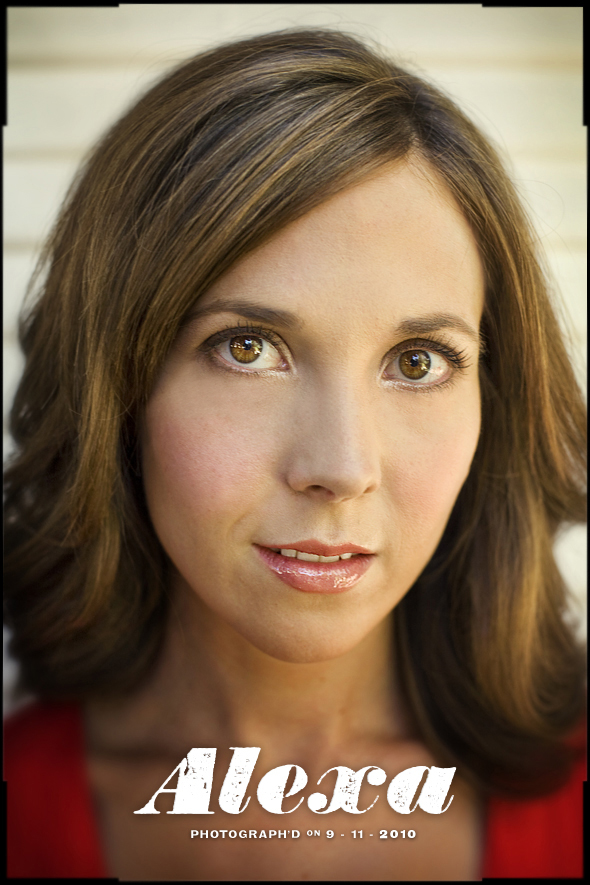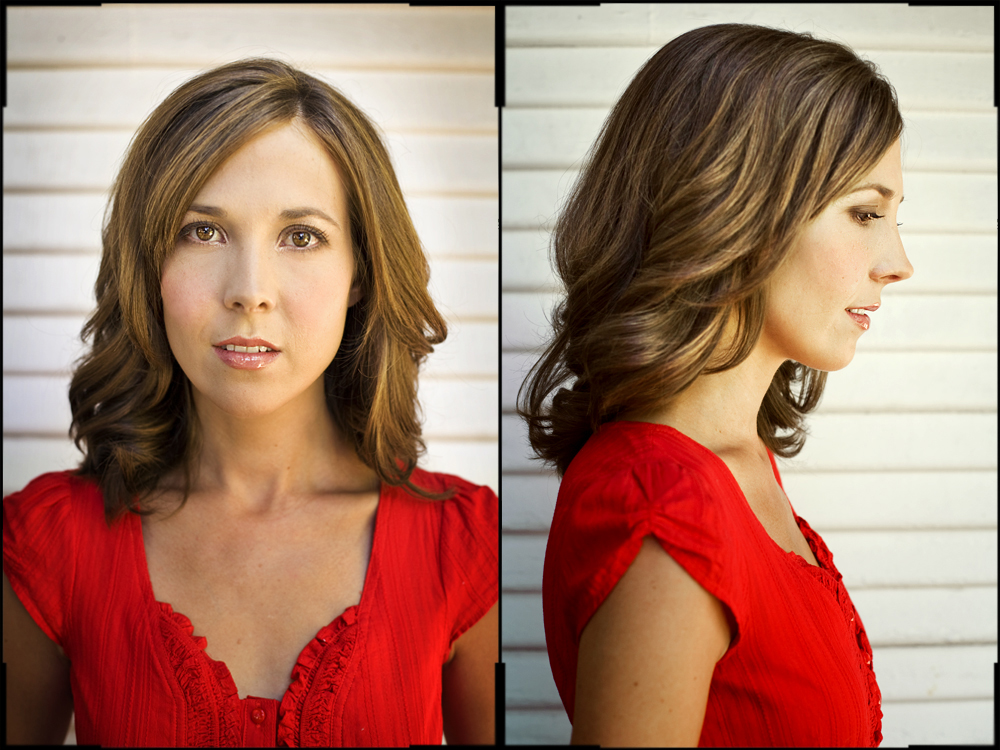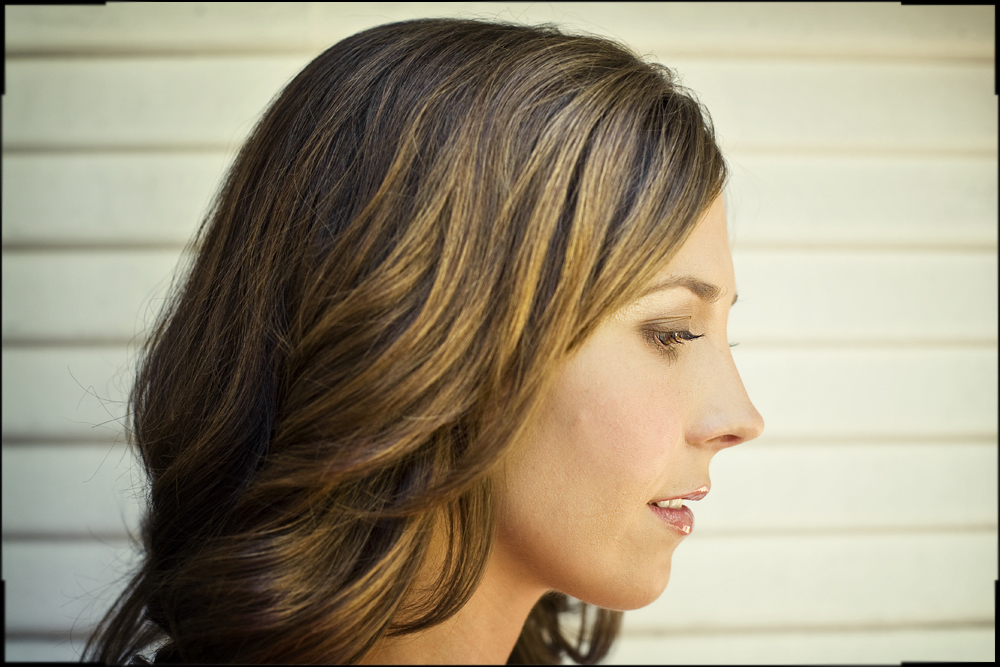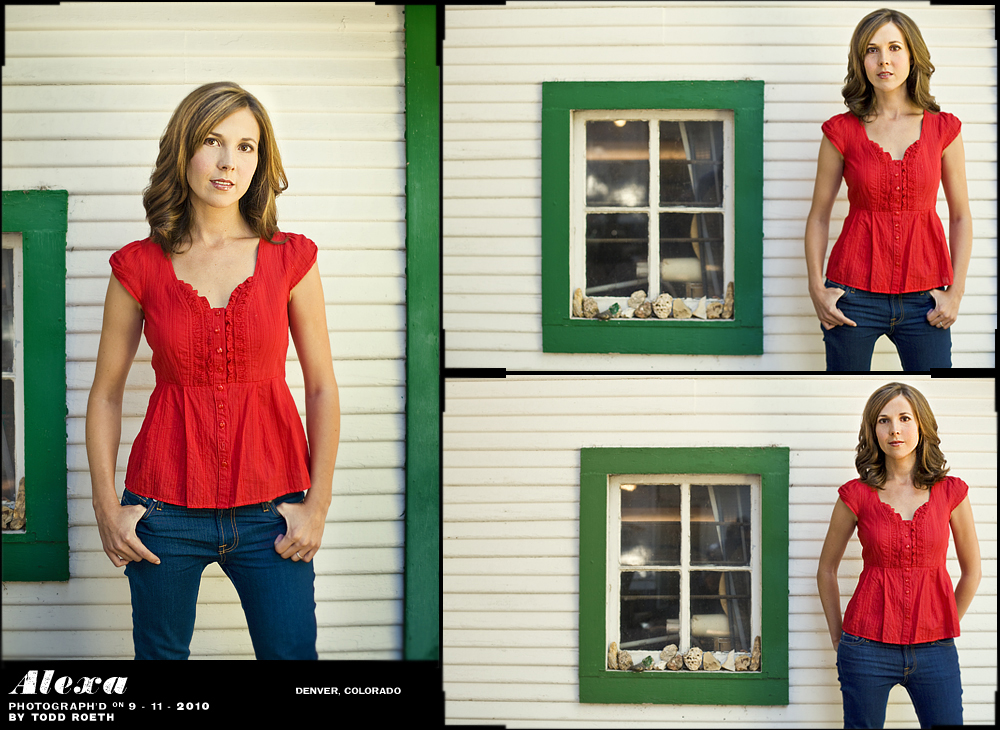
A few weekends ago, I met up with the actress Alexa Alemanni to make some new head shots for her professional use. I have not photographed headshots in the industrial sense, and was commissioned to do so this time not because of any experience on the matter, but because I know Alexa and photographed her wedding. [Everybody knows I am not a wedding photographer.] It was because of my personal relationship with her more than my capacity as a photographer that I met with her while she was in Denver visiting her family; she wanted photographs of her that she felt better captured her as a person instead of constructing any character, and thought that having a photographer she knew would yield the images she was after.
I have been thinking on this photo shoot with Alexa for a few weeks, because I have not (at least consciously) thought about how to approach photography in the context of traditional head shots for Hollywood consumption, or the cunning and powerful ability portraiture has to either reveal – or create – a persona. On the day of the shoot while discussing the assignment, the first thing Alexa said to me was ‘I want photographs of me, not any character I am or could be.” “Got it”, that is in part why you asked me, I reminded myself.
This project reminded me that portrait photography is, in my mind, more than all else, the visual residue of an encounter between two people; the pictoral evidence of interaction between the subject and the photographer. As much can be said of the photographer as the subject when studying a portrait. The moments created are made from participation from both parties, the moments chosen to capture are a testament to the moments the photographer can elicit (by engaging, or leaving alone the subject, and knowing when to do either), and the photographer’s sensibilities of which moments to capture when required to introduce and interject the camera within the conversation.
In the end, the head shots received good feedback. They are not the ones I am posting here. These images were made as an afterthought and with an unused red shirt Alexa had on hand. I took about a dozen frames at the end of the shoot in the manner that I would approach a portrait of Alexa, without the guidelines of a professional headshot to abide by. This exercise was good in hindsight, and while comparing them to the head shots during the editing process, I could better identify and critique my personal tendencies. (For example, it is evident that when left to my own devices, I drop the aperture like DJ drops the bass, in hopes to get the crowd cheering.)
The more I photograph people, the more I realize that it is an exercise more in developing my skills as a person far more than my skills with a camera. I photograph lots people. Some are friends and some are strangers. The more images I make of either, the less I realize it has to do with the camera and the more it has to do it’s operator; Alexa asked me to photograph her because she felt comfortable with me, not my camera gear. Perhaps this is not the best method for finding a heart surgeon, but it explains a lot about how people interpret a photograph of a person. When people are connecting with (or at least confronting) a photogrpaher, and not just looking at a camera, both are better revealed.


